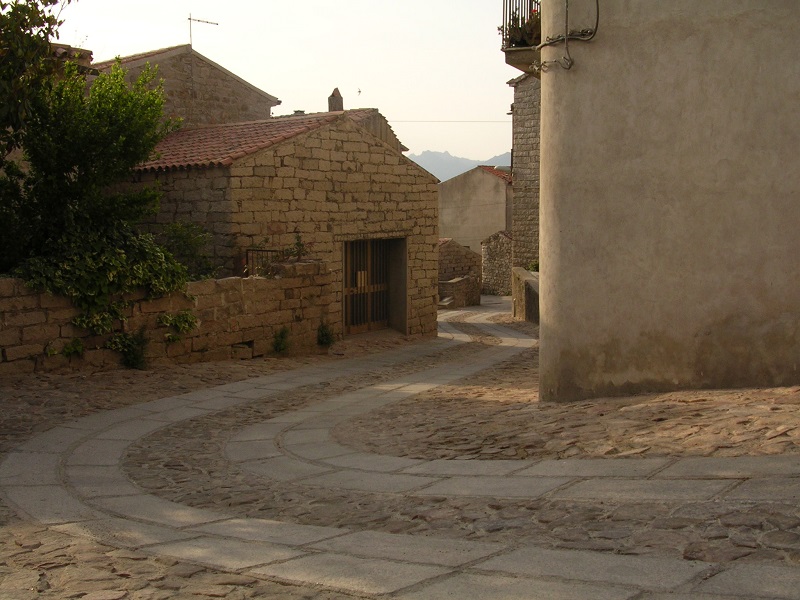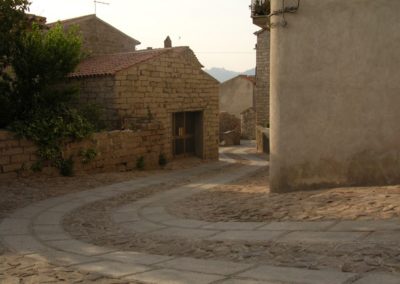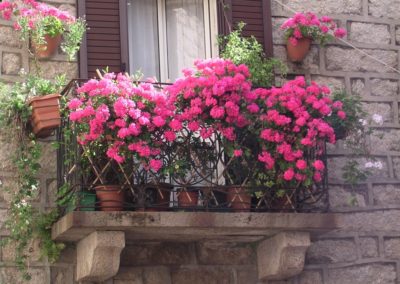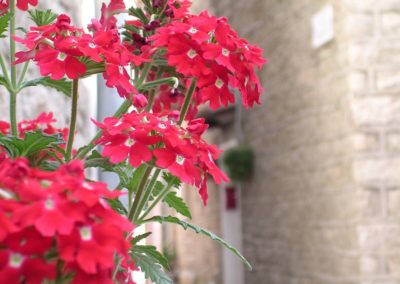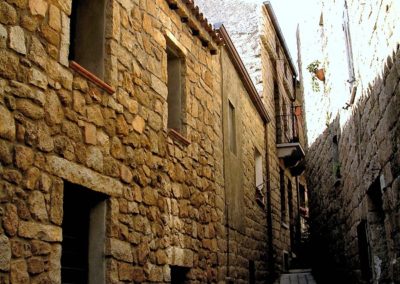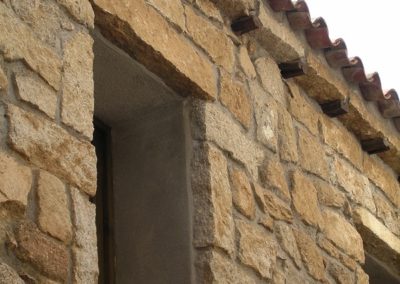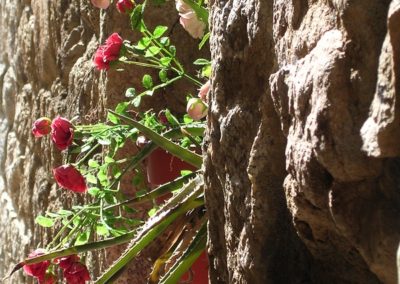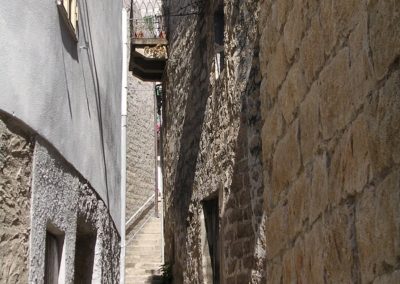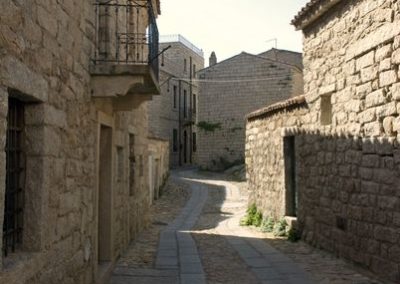Whether you’re inside the village and in the surrounding territory, Aggius always has a wide range of cultural offerings, historical and artistic heritage to offer to its guests.
It starts right from the historic centre of the village, that arises as a true outdoor museum: entirely in granite and well preserved, has recently been skilfully renovated. Today it is very populated and active, often ideal and favourite location for the most important events. Along its narrow streets, you meet alleys and squares and plazas decorated with drawings depicting scenes of peasant life or geometric motifs taken from textile tradition. Its churches, the fountains and the characteristic corners offer visitors an unforgettable spectacle. Everything is cared for in minute detail and absolutely deserve a visit: Piazza delle Danze, via Speslunga, with the game of “Pampana”, via Marconi, where traditionally every year on 23rd June are lit bonfires in honour of San Giovanni Battista, via Vecchia, via Paraula, via dell’Ordito and via Monti di Lizu.
Inside the village there are four main churches: The Parish Church dedicated to Santa Vittoria, which according to the documents found in the Curia Vescovile, was erected in 1536.The internal structure is in Romanesque-Baroque style, latin cross shaped with three aisles delimited by very high arcs. The church of Madonna d’Itria, isolated respect to the other, was built in 1750 by the family Tirotto, in gratitude to Our Lady for the return of a family fell into the hands of the SaracensThe Oratories of Santa Croce and Rosario, both seat of the homonymous confraternities, the first reports as single date, carved on the architrave of the portal of the facade, 1709, perhaps a date of restoration; the second was built on the ruins of a pagan sacellum, whose date of 1727, engraved on the architrave of the entrance, probably indicates only a date of restoration. The Parish Church and the oratory of the Rosary are equipped with respective bell towers of recent construction, both on the project of the architect of Aggius Giovanni Andrea Cannas.



